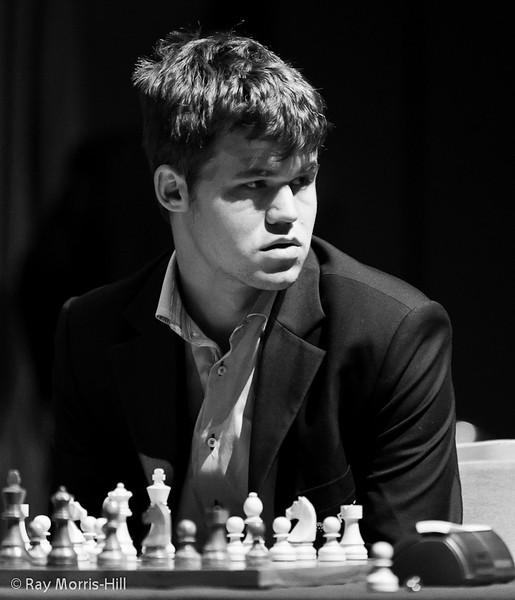
The Best Moves Never Played: Intuition.
The next several articles will be dedicated to the topic of Intuition. What is intuition in chess? It is a concept, hard to define and there can be endless debates about whether a certain decision is intuitive or not. Nevertheless, it is useful to have a general idea of what aspect of chess intuition we will be talking about here. The definition from Beim's book "The Enigma of Chess Intuition" is clear and concise:
"In chess, intuition manifests itself first and foremost in the ability, in a somewhat unconscious way, and with a high degree of accuracy, to choose between different lines of play".
I don't believe we are born with chess intuition but rather develop it through a deliberate practice of studying chess. The stronger the player's calculation, assessment and other chess skills, the better his feel for the position, and the better his chances for choosing the right move. And if we set to learn about intuitive decisions it makes sense to study the games of the best chess players: in particular, the best chess player in the world - Magnus Carlsen.
There is an interesting paragraph about Magnus Carlsen in Time Magazine:
"According to Kasparov, Carlsen has a knack for sensing the potential energy in each move, even if its ultimate effect is too far away for anyone — even a computer — to calculate. In the grand-master commentary room, where chess’s clerisy gather to analyze play, the experts did not even consider several of Carlsen’s moves during his game with Kramnik until they saw them and realized they were perfect. “It’s hard to explain,” Carlsen says. “Sometimes a move just feels right.”"
Although we have many of Carlsen's games available, not all are annotated by him. It is of interest to hear what he has to say about certain positions right after the end of the game. These post-mortems are especially useful as one can get a sense what Carlsen thought after the game without having a bias from computer analysis. Let us look at a few examples with Carlsen's audio transcripts from the recent London Chess Classic.
In the following position McShane, who is playing white is slightly better.

The commentator asks both players of how did they feel about g5? McShane thought that the game continuation he chose gave him clearer edge adding the evaluation of position after g5: "White is probably better but it is little bit complicated and black side is probably easier to handle"
Carlsen's assessment of the final position: "I felt I am ok here... The double pawns may be ugly but they cover a lot of squares. Here I have Ne7 and it feels that I am more solid on the kingside than white is. That is why I should go Nce7 rather than Qd6. I like this better than the game."
The end position is by no means typical; there is not much reference that one can get from classics for example. What really struck me was the Nce7 move that Carlsen found during the game. He evaluated the position only after Nce7 and not before that and computer supports his choice that precisely the knight should go to e7 and not a queen. The commentators were a bit puzzled with Carlsen's ease of this positional evaluation.
The next moment of interest happened few moves later, when McShane calculated this insanely complicated line before playing 26. Ne5 spending much time on it. On what Carlsen replied: "I just thought Qb5 b3 was sufficient."
In fact according to Houdini b3 led only to equality after b:f6. Here we see an example where Carlsen chose the superior Qd6 move but his explanation of why does not look too convincing. Qd6 feels like a stronger move since it keeps the queen closer to the king and potentially prepares for the queen trade. I think Qd6 was intuitive move and he didn't bother to dwell into the details of Qb5 move as McShane did - ending up in a terrible time-trouble.
The last moment of interest from this game comes during the discussion of one line.
Carlsen thought that the best chance to complicate matters for white in the following position would be to play h4 adding "I can go Nd6 h5 Ne4.". Here McShane asks him a bit surprised - "Not Nf5?" On which Carlsen replies: "Ne4 looks better for me somehow, I don't know. But Nf5 Qh3 I don't really see a follow up. It seems like you created something over there. At least that would have been more complicated. But now it is marginally better for black but it should obviously be a draw."
Indeed, computer supports Carlsen's move of Ne4 being much stronger than Nf5. Both moves attack queen. The knight on e4 can be chased away by f3 and also R:e4 is a possibility in some lines. The knight on f5 is closer to the king and cannot be chased away by the pawn. How does one choose Ne4 over Nf5? I am pretty sure it is intuitive decision as there are no concrete positional flags, neither specific lines. I bet for an average GM, Nf5 looks as good as Ne4.
Let us look at the last example in this article where Kramnik has a pressing position.

Here, Kramnik put the positional evaluation in simple terms: "If black manages to put his pawn to b5 he is more or less ok, but Rb5 somehow blocks it and now black had unpleasant choice to make: whether to play Bc6 which maybe was better..." Here Carlsen added that " I think Bc6 is definitely better", clearly indicating that he is pretty sure that Bc6 is better, while Kramnik has some doubts. And indeed according to Houdini Bc6 is a superior move. So what is the nature of Carlsen's mistake? We can get a better sense through his next comment: "I miscalculated something in the game and then... Ok, It is better to have weak pawn on c6 than one which would certainly be lost on b7."
Miscalculated is the key word! Right after the game he knew for sure that Bc6 is better and logically he could justify the move but the calculations proved otherwise.
Next week we will continue exploring the element of intuition in the games of Magnus Carlsen.






